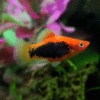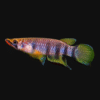To provide the best experiences, we use technologies like cookies to store and/or access device information. Consenting to these technologies will allow us to process data such as browsing behaviour or unique IDs on this site. Not consenting or withdrawing consent, may adversely affect certain features and functions.
The technical storage or access is strictly necessary for the legitimate purpose of enabling the use of a specific service explicitly requested by the subscriber or user, or for the sole purpose of carrying out the transmission of a communication over an electronic communications network.
The technical storage or access is necessary for the legitimate purpose of storing preferences that are not requested by the subscriber or user.
The technical storage or access that is used exclusively for statistical purposes.
The technical storage or access that is used exclusively for anonymous statistical purposes. Without a subpoena, voluntary compliance on the part of your Internet Service Provider, or additional records from a third party, information stored or retrieved for this purpose alone cannot usually be used to identify you.
The technical storage or access is required to create user profiles to send advertising, or to track the user on a website or across several websites for similar marketing purposes.















Emily Carter (verified owner) –
I recently added 10 X Sunset Simpson Variegated Platies to my aquarium, and I couldn’t be happier! As a passionate fish parent, I prioritize the health and happiness of my fish, and these livebearer fish exceeded my expectations. They arrived within a week of ordering, and I was delighted to see them swimming energetically in their new home. Their vibrant colors and unique patterns really bring my tank to life!
In comparison to other platies I’ve kept, these ones have shown a remarkable adaptability to their environment. I’ve noticed they are much more social and lively, often interacting with one another, which is a joy to watch. I also appreciate how easy they are to care for; they thrive on a balanced diet and seem to appreciate the addition of some floating plants for cover.
A minor concern was that one of the platies appeared slightly stressed during the acclimation process, but after a few hours, it settled in beautifully. Overall, I highly recommend these platies to both beginners and experienced hobbyists looking to add color and activity to their tanks. They truly are wonderful little companions, and I’d definitely purchase them again!